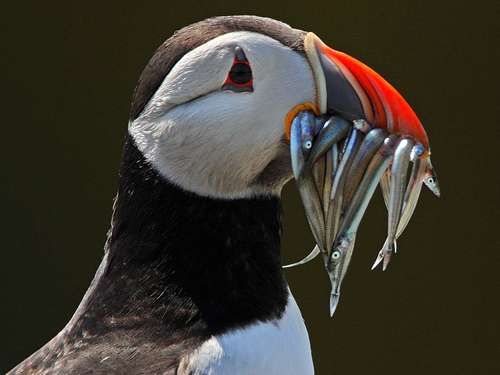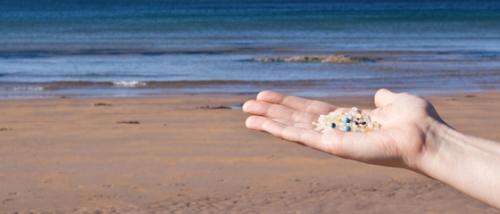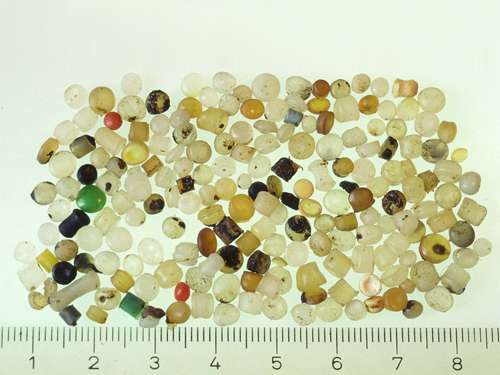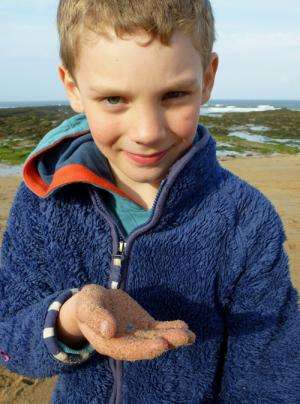Scottish residents to help put an end to microplastic pollution on beaches

"From whales to wellies, syringes to cigarette butts and fishing lines to fridges – it's all been found around the Forth. But not many locals realise they are sharing their beach with nurdles." So says a group of concerned East Lothian residents living around the Firth of Forth on Scotland's east coast.
Not as cute as they sound, nurdles are the raw material for the trillion-dollar plastic industry. Each about the size of a lentil, these plastic pellets are melted together to form almost all plastic products.
Accidental spills and careless handling at industrial facilities creates an easy route for these pellets to enter the marine environment, where they become embedded in estuarine and coastal habitats. Sadly, in the marine environment nurdles resemble floating fish eggs and tiny crustaceans, and are regularly mistaken for food by wildlife.
"From whales to wellies, syringes to cigarette butts and fishing lines to fridges – it's all been found around the Forth. But not many locals realise they are sharing their beach with nurdles." So says a group of concerned East Lothian residents living around the Firth of Forth on Scotland's east coast.
Not as cute as they sound, nurdles are the raw material for the trillion-dollar plastic industry. Each about the size of a lentil, these plastic pellets are melted together to form almost all plastic products.
Accidental spills and careless handling at industrial facilities creates an easy route for these pellets to enter the marine environment, where they become embedded in estuarine and coastal habitats. Sadly, in the marine environment nurdles resemble floating fish eggs and tiny crustaceans, and are regularly mistaken for food by wildlife.
uelled by what they found, residents got together to try and learn more about the number of nurdles in the Forth and where they were coming from.

With support from a recently-formed local environmental NGO called Fidra, the group has launched The Great Nurdle Hunt, which aims to reduce industrial pellet pollution in the Firth of Forth by monitoring the accumulation of plastic pellets in the local marine environment and raising awareness of the problem in the community and the plastics industry.
Through its marine plastics programme, Fauna & Flora International is supporting this important work by providing technical support and advice to the group.
Toxic trash
Cathy Sexton, who is leading the initiative said, "The Great Nurdle Hunt is a way of finding out the extent of the nurdle problem on beaches around the Forth, and which beaches are most affected by this form of pollution.
"We have set up a website (www.nurdlehunt.org.uk) which explains what to look for and how to do your own nurdle hunt safely, and you can use the website to share your findings and check out our interactive map to see what other people have discovered. Nurdle hunting is really addictive, anyone can do it, and you really will be contributing to our collective efforts to document and reduce nurdle pollution in the Forth."
Nurdles may sound innocuous, but they are not. As Cathy explained, "Marine scientists are starting to get very worried about the effects of small pieces of plastic like nurdles on sea life and whether this may have impacts on the wider food chain.

"These bits of plastic can attract and concentrate persistent toxic pollutants found in seawater, and we know that nurdles collected on beaches along the Forth show high levels of these toxins.
"We are particularly worried because the Forth is also recognised as an internationally-important home to many animals and seabirds that are known to mistake nurdles for food. If eaten, plastic and the toxins coating them enter the food chain. Sadly post mortems on gulls, fulmars, terns and puffins have found nurdles in their stomachs."
Keeping nurdles where they belong

The Great Nurdle Hunt initiative also aims to engage local plastic producers in finding a solution, to ensure that nurdles are not able to escape during the plastic manufacturing process.
According to Cathy, "There are around 30 companies that make, ship and use nurdles around the Forth. The Great Nurdle Hunt aims to engage with these companies in order to make the Firth of Forth the first zero-pellet-loss estuary in the UK – and challenge the rest of Scotland to do the same."
More information: To find out more about The Great Nurdle Hunt and how you can get involved, visit www.nurdlehunt.org.uk.
Provided by Fauna & Flora International


















